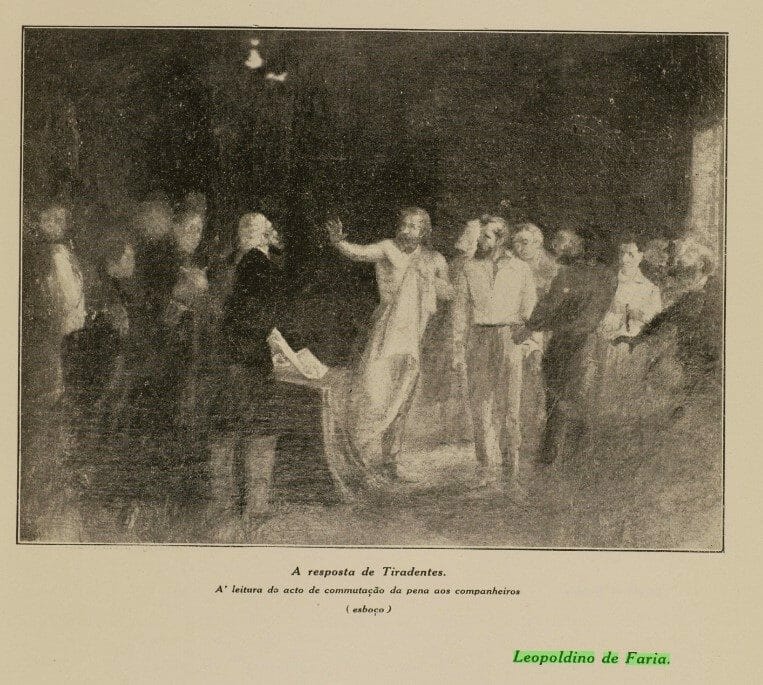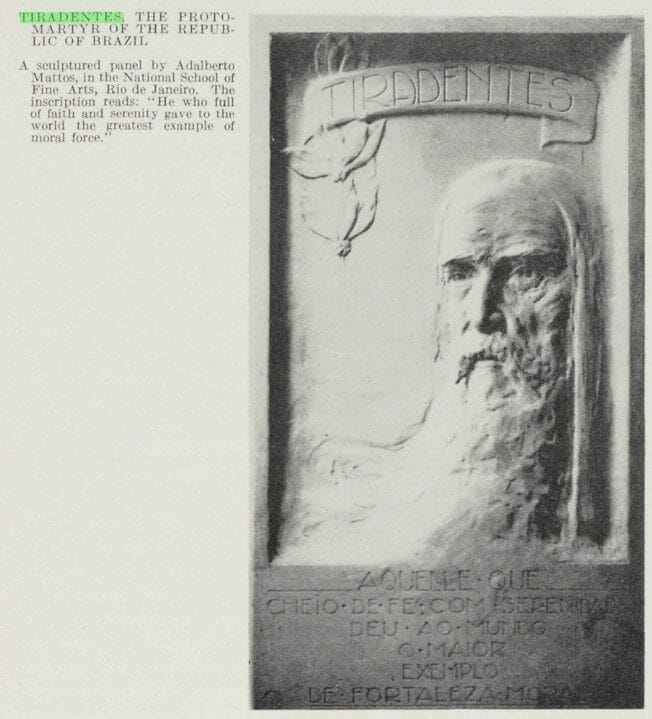| By Lourdes Mena, Marketing Manager for Latin America |
On 21 April, Brazil celebrates the Tiradentes Day, commemorating the anniversary of the death of Joaquim Jose da Silva Xavier (1792), considered by many to be the first martyr of the Republic of Brazil. But who is this man, who only began to be considered a national hero a century after his death? To find out more, we take a look through Brazilian and Portuguese History and Culture: The Oliveira Lima Library, one of the finest collections of Luso-Brazilian materials available to scholars.
Joaquim Xavier, also known as Tiradentes (in English, ‘tooth puller’), was a dentist, militant, political activist, and leading member of Brazilian revolutionary movement Inconfidência Mineira. When a conspiracy to inspire the people to rise up in rebellion against Portugal failed, Tiradentes was arrested, tried, and publicly hanged. His body was quartered into several pieces that were exhibited in multiple cities to terrorize the people, especially those who sympathized with his ideas of independence.

By entering the term “Tiradentes” in the Term Frequency tool in Brazilian and Portuguese History and Culture, we see that the name of this hero remained dark after his death and even after the independence of Brazil in 1822.
This could possibly be because even after independence, Brazil remained a monarchy under the House of Braganza and the descendants of Queen Mary I, against whom Tiradentes conspired and who signed his death sentence. In addition, Tiradentes was a Republican.
After the republic was proclaimed in Brazil in 1889, the positivist ideologists who presided over its foundation sought in Tiradentes figure a personification of the republican identity of Brazil, mystifying his biography.
It is interesting to see how in a textbook of 1921 found within the collection, titled Tales of Brazil’s history: for use in schools, Tiradentes is described as “a pure soul” and as “an admirable example of patriotic devotion, of love for his country, of tenderness for his fellow man and of suffering in favor of freedom. “

His traditional iconography was also romanticized by sculptors and painters like Leopoldino de Faria, who represented him bearded, wearing a camisole, and extremely thin, with some resemblance to Jesus Christ.

However, since the beginning of the Republic, some opposed the enthronement of Tiradentes as a hero and the idea of erecting a statue of him in the federal capital. Such a stance can be seen in the speech read by Major Jose Domingues Codeceira at the meeting of August 10, 1893 at the Archaeological Institute and Geographic Pernambucano.

“Lift up a statue of Tiradentes, who for we Brazilians, knowing our history, will have no significance; and for the illustrious foreigner, when having to envisage it, say, with a laugh of scorn – here is another bronze lie, raised by the Brazilians.”
The study of the evolution of the heroes of a country as a means to better understand the identity of its people is certainly a fascinating subject. In the Pamphlets and Monographs archives that form Brazilian and Portuguese History and Culture: The Oliveira Lima Library, history enthusiasts will find countless references that allow for better understanding of the history and culture of Brazil.
Blog post cover image citation: Grant, Frances R. Brazilian Art: by Frances R. Grant. Washington, D.C.: The Pan American Union, [1931?]. Brazilian and Portuguese History and Culture.
For more information about the digital resources featured in this article, or to request a trial, please get in touch with us today.

